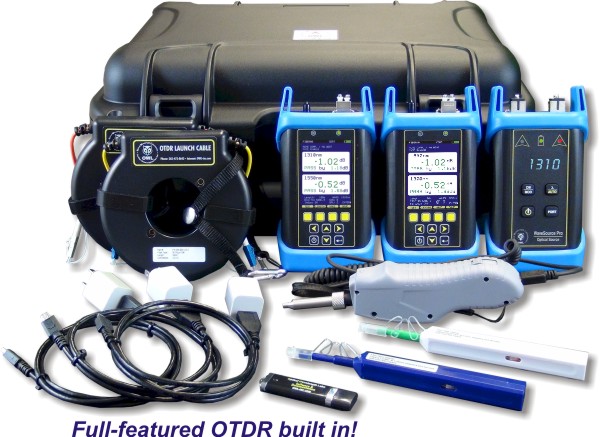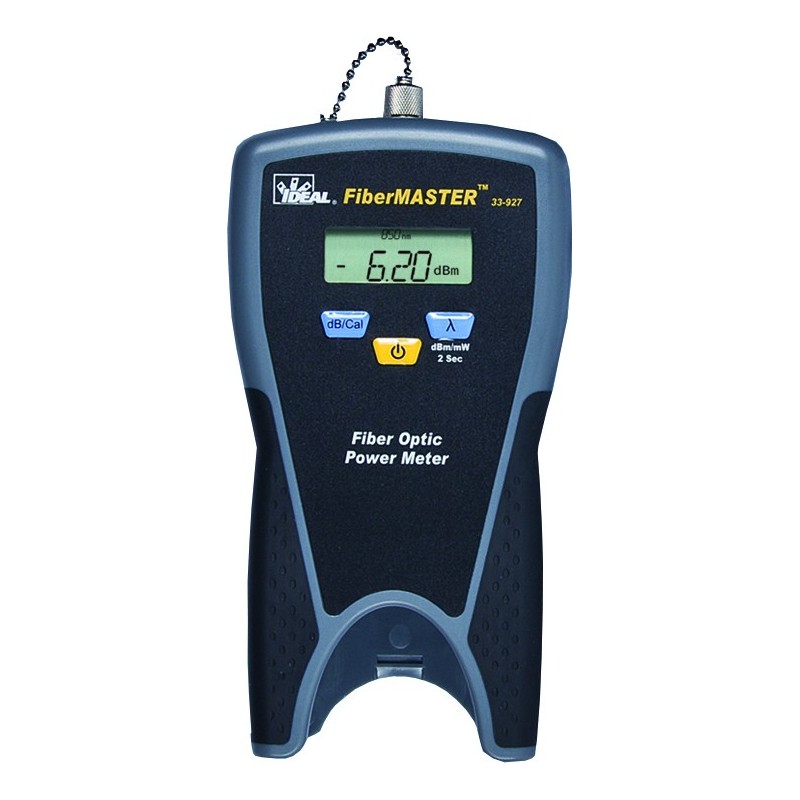Best practices for maximizing the performance of fibre testing equipment
Wiki Article
Exploring the Influence of Robotic Vision on Modern Manufacturing Techniques and Quality Assurance
Robotic vision modern technology is transforming the landscape of contemporary production and quality assurance. By incorporating sophisticated imaging systems and man-made intelligence, manufacturers can attain extraordinary degrees of accuracy and effectiveness. This change not just maximizes manufacturing processes but additionally addresses critical difficulties in preserving product standards. As sectors increasingly depend on these technologies, the ramifications for future manufacturing methods continue to be to be fully checked out. What will this mean for the competitive characteristics of the marketplace?Understanding Robotic Vision Innovation
Robotic vision innovation acts as the backbone of automation in modern production. It incorporates using cams, sensors, and artificial intelligence to make it possible for robotics to interpret and reply to aesthetic information from their setting. This innovation enables robotics to recognize, find, and assess items, making them efficient in performing intricate tasks such as setting up, assessment, and product handling with accuracy. The integration of artificial intelligence formulas even more improves the capability of robotic vision systems, permitting them to adjust to differing problems and boost with time. By processing pictures and data in real-time, robotic vision systems can assist in much faster decision-making and lower mistakes in producing processes (robotic vision). This modern technology not only enhances operational efficiency yet likewise guarantees that quality standards are satisfied constantly. As the manufacturing landscape proceeds to progress, understanding the complexities of robot vision modern technology becomes crucial for leveraging its possible totallyBenefits of Robotic Vision in Manufacturing
Robotic vision modern technology provides significant advantages in production by boosting accuracy and precision in tasks such as quality assurance and assembly. This raised level of detail warranties that items fulfill rigorous requirements, decreasing waste and remodel. Additionally, the combination of robotic vision can bring about boosted production performance, permitting manufacturers to enhance their procedures and attain higher result rates.Enhanced Precision and Accuracy
In modern-day production, improved precision and accuracy are crucial for enhancing production procedures and making sure item high quality. Robotic vision systems allow machines to perform complex tasks with exceptional consistency. These systems utilize advanced imaging technologies to detect minute details and variants in materials, components, and finished products. By examining aesthetic data in real-time, robotic vision substantially decreases human error, bring about less issues and greater high quality criteria. Furthermore, enhanced precision in dimensions and placing facilitates better positioning in assembly processes, which is important for complex styles. Ultimately, the assimilation of robotic vision not only reinforces the dependability of making outputs however additionally cultivates self-confidence amongst customers pertaining to product honesty and efficiency. This precision is critical in industries where quality is extremely important.Enhanced Production Efficiency

Manufacturers are significantly turning to vision systems to increase manufacturing efficiency across numerous procedures. These advanced systems make it possible for real-time inspection and monitoring, substantially minimizing downtime brought on by errors or defects. By incorporating robot vision, companies can automate quality control, enabling for faster recognition of problems and lessening the need for human intervention. This leads to streamlined workflows, as robotics can quickly adapt to changes in production demands without compromising accuracy. Furthermore, vision systems promote far better supply monitoring by precisely tracking components and items, ensuring perfect source usage. Eventually, the adoption of robotic vision not just improves performance however also contributes to higher result prices, decreased operational costs, and boosted general productivity in the manufacturing sector.
Enhancing Quality Assurance Processes
Robotic vision modern technology greatly boosts quality assurance processes in manufacturing by using precision examination strategies. These sophisticated systems assist in real-time issue discovery, making sure that products meet rigorous top quality standards. As an outcome, makers can lessen waste and boost overall effectiveness.Precision Evaluation Techniques
Precision inspection methods have actually reinvented top quality control processes in manufacturing, enabling the detection of minute problems that traditional methods might ignore. These strategies leverage progressed imaging innovations, such as high-resolution cams and laser scanning, to accomplish unparalleled accuracy. By utilizing robot vision systems, producers can automate examination jobs, making certain constant performance and minimizing human mistake. The combination of artificial intelligence formulas in addition improves these systems, allowing them to adapt and enhance over time. On top of that, accuracy inspection helps with the recognition of refined variations in product measurements and surface area finishes, which can considerably affect overall item top quality. As an outcome, suppliers can carry out corrective actions much more quickly, eventually causing decreased waste and improved customer complete satisfaction.Real-Time Issue Discovery
Harnessing innovative imaging innovations, real-time defect detection transforms high quality control processes in manufacturing. By incorporating high-resolution video cameras and advanced algorithms, producers can quickly determine anomalies throughout production. This innovation helps with instant restorative actions, reducing waste and boosting overall efficiency. Real-time systems assess items as they move along the setting up line, making certain that flaws are discovered and addressed without delaying manufacturing timetables. Furthermore, the execution of artificial intelligence boosts the accuracy of these systems, permitting them to adapt to new flaw patterns gradually. Producers benefit from improved product top quality and decreased functional prices. Ultimately, real-time problem discovery not only simplifies processes yet also cultivates a society of continuous enhancement in modern-day Recommended Site production atmospheres.Real-Time Data Evaluation and Decision Making
In the vibrant landscape of production, real-time data evaluation empowers systems to make swift, informed choices. By leveraging sophisticated robot vision modern technologies, makers can gather and refine vast amounts of information immediately. These systems examine aesthetic inputs to keep track of production processes, guaranteeing that any inconsistencies from quality requirements are detected and resolved immediately. Manufacturers can maximize procedures by reapportioning resources and adjusting process based on real-time insights.The integration of information analytics enables for predictive upkeep, where prospective tools failings are prepared for prior to they interfere with production. This positive strategy lessens downtime and improves general efficiency. fibre testing equipment. The capacity to make data-driven decisions in real time substantially minimizes waste and boosts product high quality, allowing manufacturers to react to market demands quickly. Consequently, real-time information analysis not only streamlines production however likewise promotes a culture of continual improvement in modern production settings
Challenges in Applying Robotic Vision Solutions
Executing robot vision systems in making offers an array of obstacles that can impede their effectiveness. One significant challenge is the complexity of incorporating these systems with existing equipment and workflows. Makers commonly face compatibility YOURURL.com concerns with legacy equipment, resulting in boosted prices and downtime. In addition, the irregularity in item shapes, dimensions, and products can complicate the calibration of vision systems, requiring substantial training and fine-tuning.An additional difficulty hinges on processing large quantities of aesthetic information in actual time. High-performance computer sources are essential, which might call for further financial investment in infrastructure. In addition, there is a scarcity of knowledgeable personnel qualified of handling and keeping these advanced systems, bring about potential functional inefficiencies. Ultimately, making certain the integrity and accuracy of robotic vision systems under differing ecological conditions positions a continuous challenge. Dealing with these problems is important for maximizing the possible advantages of robot vision in production.
Future Fads in Robotic Vision for Production
As innovations in synthetic knowledge and artificial intelligence remain to advance, the future of robotic vision in manufacturing appears progressively appealing. Arising trends suggest a shift towards more innovative imaging innovations, such as 3D vision systems and hyperspectral imaging, which will certainly improve accuracy in quality assurance processes. Integration with the Internet of Points (IoT) will allow real-time data evaluation, allowing robotic systems to adjust rapidly to adjustments in the manufacturing atmosphere. Additionally, the development of joint robots (cobots) geared up with sophisticated vision abilities is anticipated to facilitate smooth human-robot communications, boosting performance and safety and security on the . Additionally, the unification of side computer will certainly equip robot vision systems to process information in your area, decreasing latency and enabling faster decision-making. These technologies will certainly not only improve producing processes but also greatly navigate to this website enhance item top quality, positioning robot vision as a cornerstone of future industrial operations.Frequently Asked Questions
Just How Much Does Robotic Vision Technology Normally Expense?
Robotic vision modern technology generally sets you back in between $10,000 and $100,000, depending upon the complexity and specs. Elements influencing price include sensor quality, software program capabilities, and assimilation needs, making it important to assess specific task requirements.What Industries Are The Majority Of Affected by Robotic Vision Innovations?
Robotic vision advancements substantially impact markets such as manufacturing, automotive, electronic devices, and food processing - fibre testing equipment. These markets gain from enhanced automation, improved quality assurance, and raised efficiency, resulting in structured procedures and decreased labor pricesCan Robotic Vision Solutions Be Integrated With Existing Equipment?
Robotic vision systems can without a doubt be integrated with existing equipment. This combination boosts functional efficiency, enabling suppliers to take advantage of progressed modern technologies without the requirement for full overhauls, thereby enhancing manufacturing procedures and maintaining quality requirements.
What Skills Are Required to Run Robotic Vision Solutions?
Running robot vision systems requires efficiency in shows, an understanding of device discovering, knowledge of photo handling techniques, and the capacity to troubleshoot hardware and software concerns, ensuring smooth combination and optimal performance within making atmospheres.Are There Any Kind Of Safety And Security Interest In Robotic Vision in Production?

Report this wiki page